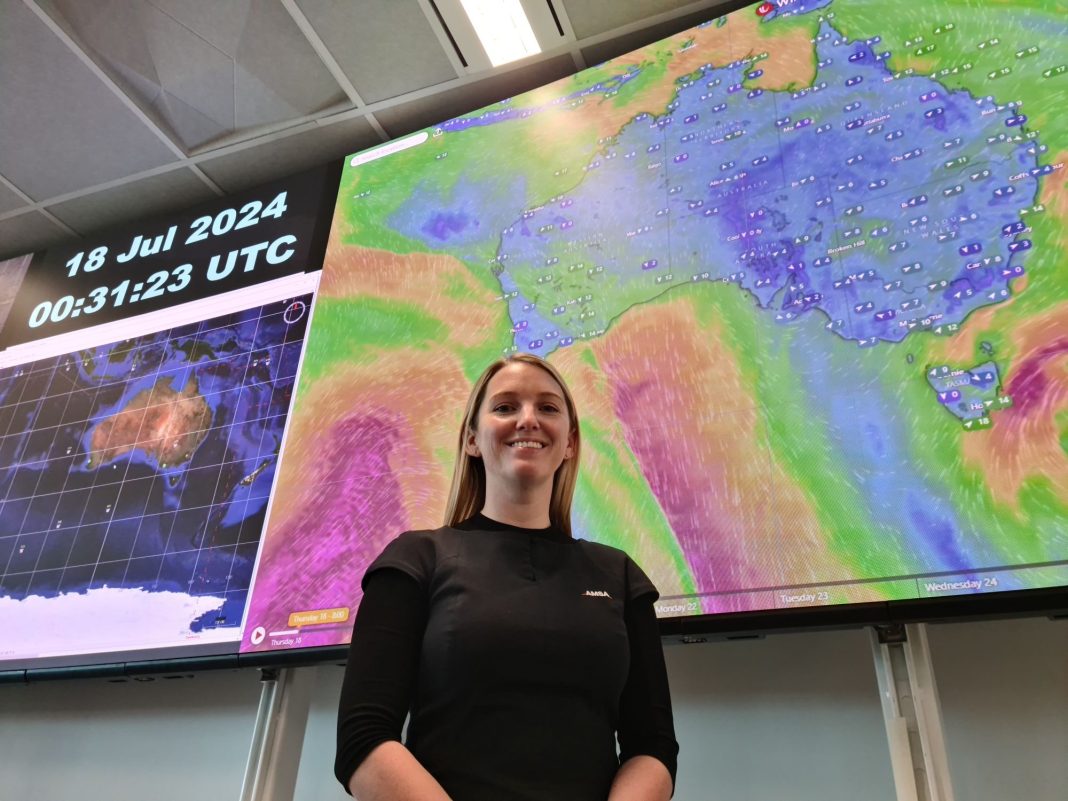Land-locked Canberra is the nerve centre of the world’s largest search and rescue region – 53 million square kms (one tenth of the Earth’s surface) – and local response officers have just moved into new, state-of-the-art headquarters.
Canberra’s 38 search and rescue officers at Australian Maritime Safety Authority (AMSA) oversee a region that extends half-way across the Indian Ocean, down to Antarctica, up to Papua New Guinea and half way out to New Zealand.
These quiet achievers work 24/7, six people per 12-hour shift (using new ergonomic chairs and screens to soften the long haul). At their disposal are four jet aircraft (based at Perth, Melbourne and Cairns), with each Bombardier Challenger 604 on standby, ready to match a commercial jet speed with a range up to 5,715 kilometres.
When I visited their new top-floor response centre in Civic – far from sea – a massive digital screen displayed hundreds of thousands of automatic tracking systems used on ships. A row of red digital clocks flashed different time zones. Seconds ticked over on a real-time digital clock.
The delicate operation of moving a response centre whilst maintaining advanced response and satellite technology, required the team to use a backup disaster recovery centre in Mitchell.
Canberra’s highly-trained response officers are a mix of maritime and aviation expertise: former Merchant Navy, police, water police, police divers, air traffic controllers, and plane/helicopter pilots.
I spoke with senior search and rescue officer, Sam Siddins, who used to fly on search and rescue aircraft – the very ones that searched for Malaysia Airlines flight MH370.
“When I was an aircraft mission coordinator, I used to be tasked on just one mission but here I get to be involved in every mission,” Sam enthuses. “It’s a lot more big-picture thinking, more strategic.”
To give you an idea of their workload, there are 571,850 registered EPIRBs (emergency position-indicating radio beacon) and 273,775 PLBs (personal locator beacons) in Australia. In the ACT, we have 8,601 EPIRBs and 5,872 PLBs.
Over one year (2023), Sam and her team received more than 2,600 beacon detections. The split second a beacon is activated, the Canberra crew receives the alert and starts investigating if a response is required (over 15 months in 2023-24 AMSA responded to 1,434 beacons that were unregistered or had incorrect registration details).
If action is required, search and rescue officers mobilise a response within minutes of receiving a beacon alert. (In case of a blackout, the response centre is serviced by an uninterruptible power supply back-up).
Officers do five days on/five days off and each shift has a 15-minute handover – plus regular coffee routines to stay focused for the 12-hour marathon.
“You need it to stay alert and be on the ball,” Sam said. “When there’s a lower tempo, that’s our time to kind of recoup but you’re still ready to react to the next thing. It is a balance, you have to manage your energy levels.”
Some jobs last 12 hours, others go for days (the Canberra crew coordinated the MH30 surface search for 42 consecutive days).
Sam, who grew up on boats, has been with AMSA for six years and she said the highlight of her job was saving lives.
“Knowing that what we do has direct impacts to the community that we serve,” she said. “That’s really what it’s about.”
AMSA is on Facebook (many of its dramatic rescue videos go viral) and online at www.amsa.gov.au



